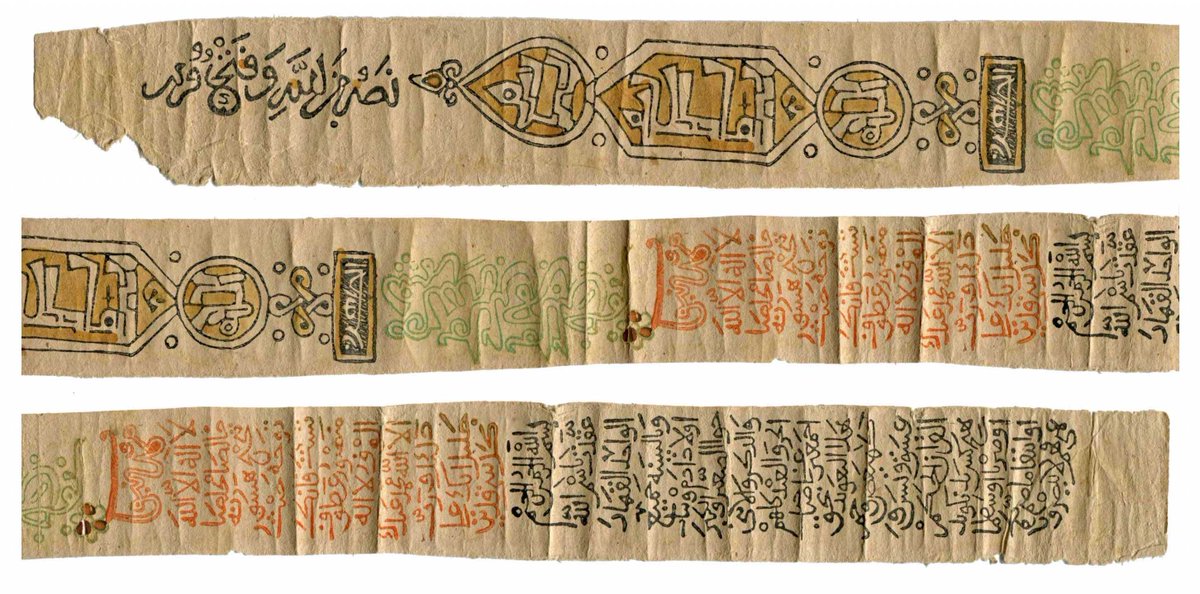Extraordinary FOUR COLOUR woodblock printing from Afghanistan, three centuries before Gutenberg.
A polychrome tarsh or printed amulet from Eastern Iran or Afghanistan, 12th century. Printed in Arabic on paper, five fields of woodblock print in black, brown, green and red print.
A polychrome tarsh or printed amulet from Eastern Iran or Afghanistan, 12th century. Printed in Arabic on paper, five fields of woodblock print in black, brown, green and red print.
This tarsh is one of only two known medieval Islamic amulets printed in colour. Both this amulet and the other known colour printed amulet, now in the David Collection, Copenhagen, have been attributed to Eastern Iran or Afghanistan on the basis of the calligraphy and paper.
The amulet opens with the Qur’anic phrase, “Help from God and a speedy victory” (Qur’an 41 (al-Saff), vs.13 (part), which was used widely as a protective talisman. It is printed here in a stylised black thuluth which shows signs of the influence of chancery scripts.
This is followed by a phrase within a hexagonal lozenge, which reads al-mulk lillah (“Dominion is God’s”), framed by medallions containing the word Allah. One of these medallions is in the form of a teardrop, similar to the marginal medallions found in Qur’ans of the period.
The third field is an outline of the basmalah in green thuluth script. The artist responsible has incorporated the foliate background that would have appeared on an inscription on wood or stone into the forms of the letters, resulting in an unusual floriated cursive script.
The fourth field consists of a prayer in orange script, opening with the name of God, mahbub, “Beloved” and invoking God’s unity and power and Muhammad’s status as his chosen one. Below, the fifth field in black script opens with the basmalah and continues....
.... with a statement of profession in God and in the sunna of the descendants of Adam and Eve. This continues with a single line in Persian asking that no person should speak evil, and further lines in Arabic asking for protection against harm.
Most extant prints like this are amulets, that is, long thin strips of paper bearing quotations from the Qur& #39;an, lists of the names of God, and other religious texts designed to ward off evil. They were likely rolled and enclosed in metal cylinders worn on chains around the neck.

 Read on Twitter
Read on Twitter










